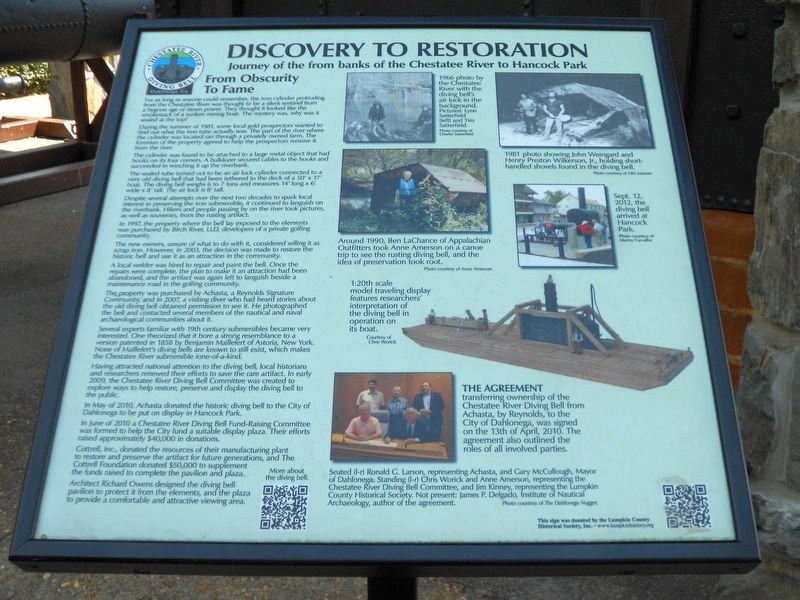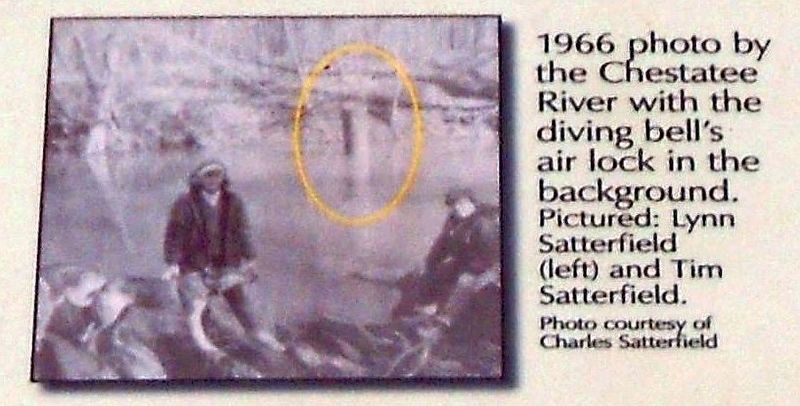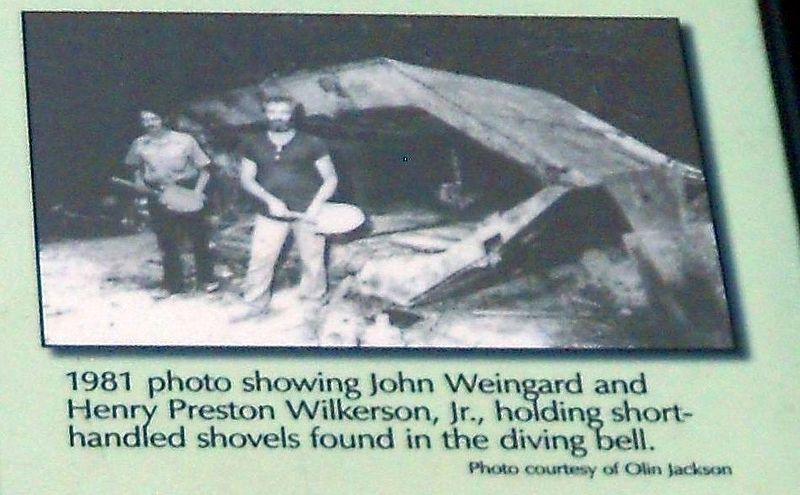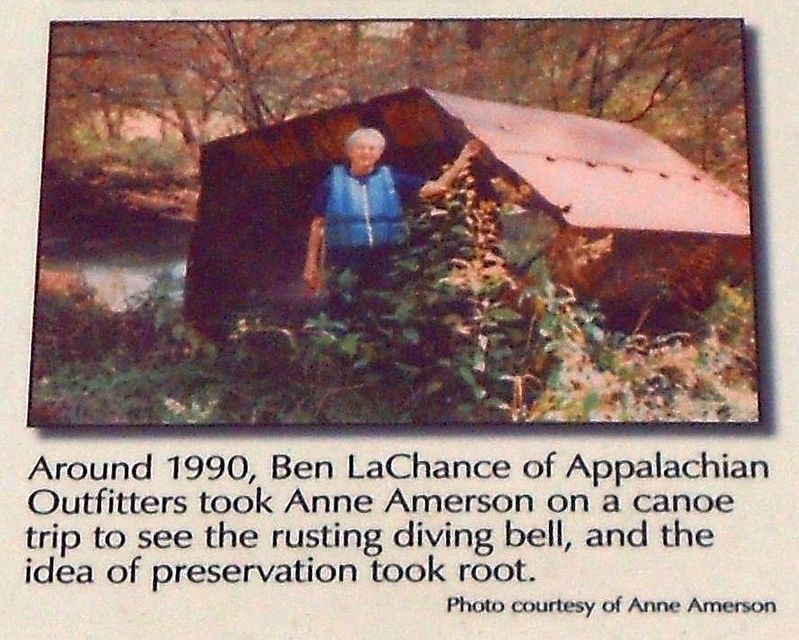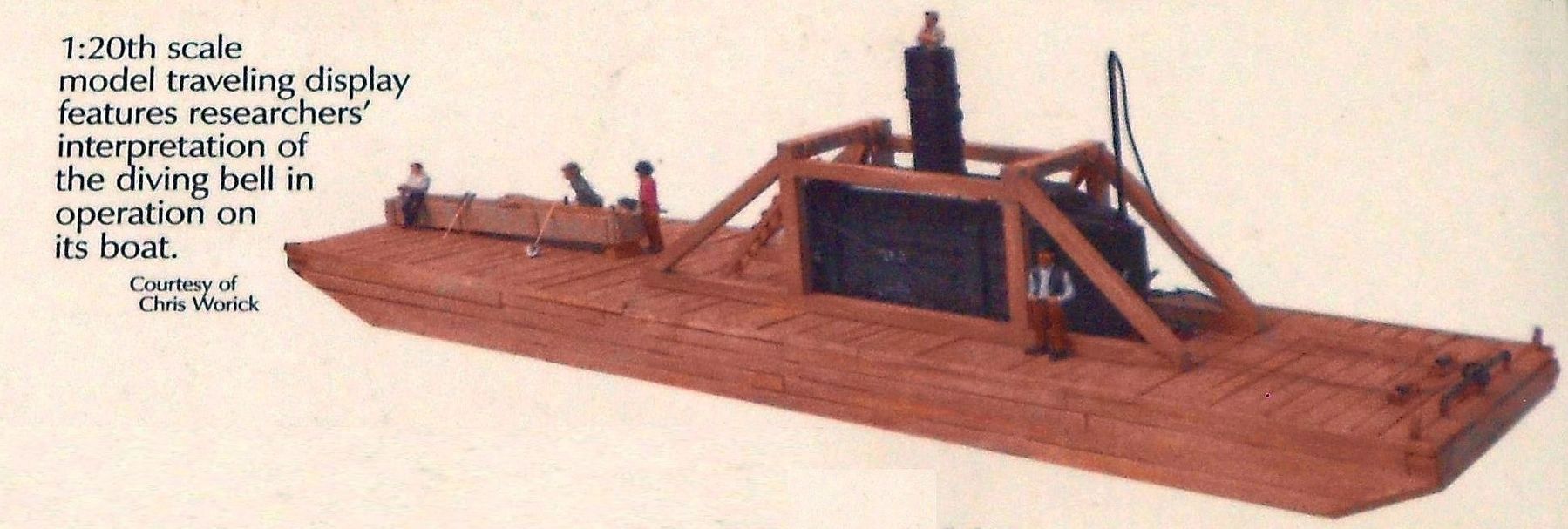Dahlonega in Lumpkin County, Georgia — The American South (South Atlantic)
Discovery to Restoration
Journey of the (Chestatee River Diving Bell) from banks of the Chestatee River to Hancock Park
— From Obscurity To Fame —
For as long as anyone could remember, the iron cylinder protruding from the Chestatee River was thought to be a silent sentinel from a bygone age of steam power. They thought it looked like the smokestack of a sunken mining boat. The mystery was, why was it sealed at the top?
During the summer of 1981, some local gold prospectors wanted to find out what the iron tube actually was. The part of the river where the cylinder was located ran through a privately owned farm. The foreman of the property agreed to help the prospectors removed it from the river.
The cylinder was found to be attached to a large metal object that had hooks on its four corners A bulldozer secured cables to the hooks and succeeded in winching it up the riverbank.
The sealed tub turned out to be an airlock cylinder connected to a very old diving bell that had been tethered to the deck of a 50’ x 17’ boat. The diving bell weighs 6 to 7 tons and measures 14’ long x 6’ wide x 8’ tall. The air lock is 8’ tall.
Despite several attempts over the next two decades to spark local interest in preserving the iron submersible, it continued to languish on the riverbank. Hikers and people passing by on the river took pictures, as well as souvenirs, from the rusting artifact.
In 1997, the property where the bell lay exposed to the elements was purchased by Birch River, LLC, developers of a private golfing community.
The new owners, unsure of what to do with it, considered selling it as scrap iron. However, in 2003, the decision was made to restore the historic bell and use it as an attraction in the community.
A local welder was hired to repair and paint the bell. Once the repairs were complete, the plan to make it an attraction had been abandoned, and the artifact was again left to languish beside a maintenance road in the golfing community.
The property was purchased by Achasta, a Reynolds Signature Community, and in 2007, a visiting diver who had heard stories about the old diving bell obtained permission to see it. He photographed the bell and contacted several members of the nautical and navel archaeological communities about it.
Several experts familiar with 19th century submersibles became very interested. One theorized that it bore a strong resemblance to a version patented in 1858 by Benjamin Maillefert of Astoria, New York. None of Maillefert’s diving bells are known to still exist, which makes the Chestatee River submersible ione-of-a-kind.
Having attracted national attention to the diving bell, local historians and researchers renewed their efforts to save the rare artifact. In early 2009, the Chestatee river Diving Bell Committee was created to explore ways to help restore, preserve and display the diving bell to the public.
In May of 2010, Achasta donated the historic diving bell to the City of Dahlonega to be put on display in Hancock Park.
In June of 2010 a Chestatee River Diving Bell Fund-Raising Committee was formed to help the City fund a suitable display plaza. Their efforts raised approximately $40,000 in donations.
Cottrell, Inc., donated the resources of their manufacturing plant to restore and preserve the artifact for future generations, and the Cottrell Foundation donated $50,000 to supplement the funds raised to complete the pavilion and plaza.
Architect Richard Owens designed the diving bell pavilion to protect it from the elements, and the plaza to provide a comfortable and attractive viewing area.
Topics. This historical marker is listed in these topic lists: Industry & Commerce • Waterways & Vessels.
Location. 34° 32.031′ N, 83° 59.084′ W. Marker is in Dahlonega, Georgia, in Lumpkin County. Marker is on Warwick Street. Touch for map. Marker is in this post office area: Dahlonega GA 30533, United States of America. Touch for directions.
Other nearby markers. At least 8 other markers are within walking distance of this marker. Chestatee River Diving Bell (c.1875) (here, next to this marker); Restoration & Preservation by Cotrell, Inc. (a few steps from this marker); Maibaum History Tree (within shouting distance of this marker); Dahlonega Stories (about 300 feet away, measured in a direct line); a different marker also named Dahlonega Stories (about 300 feet away); a different marker also named Dahlonega Stories (about 300 feet away); a different marker also named Dahlonega Stories (about 300 feet away); The Public Square (about 400 feet away). Touch for a list and map of all markers in Dahlonega.
More about this marker. Located within Hancock Park just off the square in downtown Dahlonega. The markers are located on the northeast corner.
Related marker. Click here for another marker that is related to this marker.
Credits. This page was last revised on November 9, 2018. It was originally submitted on September 23, 2018, by David Tibbs of Resaca, Georgia. This page has been viewed 180 times since then and 12 times this year. Photos: 1. submitted on September 23, 2018, by David Tibbs of Resaca, Georgia. 2, 3, 4, 5. submitted on September 29, 2018, by David Tibbs of Resaca, Georgia. • Bill Pfingsten was the editor who published this page.
